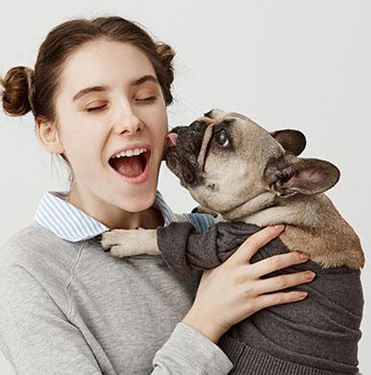Bringing a pet into your home is a joyous occasion, marking the beginning of a loving companionship. However, it’s essential to transform your living space into a safe and comfortable environment for your furry, feathered, or scaled friend. This article offers comprehensive guidance on creating a pet-friendly home, covering everything from interior design to practical considerations.
Understanding Your Pet’s Needs
Before embarking on any changes, it’s crucial to understand your pet’s specific needs. Different animals have varying requirements, and tailoring your home to their preferences will enhance their well-being and happiness.
-
Species-specific needs:
- Dogs: Active breeds might require ample outdoor space, while indoor breeds may thrive with designated play areas.
- Cats: Provide scratching posts, climbing areas, and quiet retreats.
- Birds: Ensure a spacious cage, various perches, and safe toys.
- Small animals: Offer appropriate enclosures, bedding, and hiding spots.
-
Individual preferences:
- Observe your pet’s behavior to identify their favorite spots and activities.
- Create spaces that cater to their unique personality and habits.
Pet-Proofing Your Home
Safety is paramount when sharing your home with a pet. Take proactive steps to prevent accidents and injuries:
- Secure hazardous areas:
- Keep cleaning supplies, medications, and toxic substances out of reach.
- Install safety gates to restrict access to stairs or certain rooms.
- Cover electrical outlets and cords.
- Prevent falls:
- Use window guards or screens to prevent accidental falls.
- Provide ramps or steps for older or mobility-challenged pets.
- Address chewing hazards:
- Protect furniture, wires, and plants with covers or deterrents.
- Offer chew toys as alternatives.
Creating Comfortable Spaces
Your home should be a sanctuary for both you and your pet. Designate specific areas for their comfort and well-being:
- Pet beds:
- Provide a cozy and comfortable bed in a quiet location.
- Choose a bed size and material suitable for your pet’s preferences.
- Dining areas:
- Establish designated feeding and watering stations.
- Maintain cleanliness and hygiene.
- Play areas:
- Create indoor and outdoor spaces for exercise and entertainment.
- Provide appropriate toys and interactive elements.
- Retreats:
- Offer quiet and secluded spots for relaxation and privacy.
Pet-Friendly Interior Design
Incorporate your pet’s needs into your home’s aesthetic while maintaining your desired style:
- Furniture and fabrics:
- Choose durable and stain-resistant materials for upholstery.
- Consider pet-friendly rugs and carpets that are easy to clean.
- Protect furniture with covers or throws.
- Floor coverings:
- Opt for low-maintenance and easy-to-clean flooring options.
- Hardwood, tile, or laminate are good choices.
- Window treatments:
- Select blinds or curtains that are safe and easy to clean.
- Consider blackout curtains for light-sensitive pets.
- Plants:
- Research pet-safe plants or place them out of reach.
- Consider artificial plants as an alternative.
Maintaining a Clean Environment
Regular cleaning is essential for a healthy home for both you and your pet:
- Grooming:
- Establish a grooming routine to minimize shedding and allergens.
- Use pet-friendly cleaning products.
- Litter box management:
- Keep litter boxes clean and odor-free.
- Choose a litter that suits your cat’s preferences.
- Air quality:
- Consider using air purifiers to reduce allergens.
- Regularly clean carpets, upholstery, and bedding.
Outdoor Spaces
If you have a yard, create a pet-friendly oasis:
- Fencing:
- Ensure a secure fence to prevent escapes.
- Consider underground fencing for electronic containment.
- Shade and shelter:
- Provide shade and shelter from the elements.
- Offer fresh water at all times.
- Safe plants:
- Research pet-safe plants for your garden.
- Protect poisonous plants from access.
Training and Behavior
Consistent training is crucial for a harmonious home:
- Basic obedience:
- Teach essential commands like “sit,” “stay,” and “come.”
- Use positive reinforcement techniques.
- House training:
- Establish a consistent potty training routine.
- Be patient and reward success.
- Destructive behavior:
- Identify the cause of destructive behavior.
- Provide appropriate outlets for energy.
Pet-Friendly Travel
Planning vacations with your pet requires careful consideration:
- Research pet-friendly accommodations:
- Find hotels, vacation rentals, or campgrounds that welcome pets.
- Make reservations in advance.
- Travel essentials:
- Pack necessary supplies, including food, water, bedding, and medications.
- Consider travel crates or carriers for transportation.
- Safety and comfort:
- Plan for rest stops and exercise breaks.
- Ensure your pet’s comfort during the journey.
Conclusion
Creating a pet-friendly home involves a combination of planning, preparation, and love. By following these tips and considering your pet’s unique needs, you can create a harmonious living space that benefits both you and your furry companion. Remember, patience and consistency are key to building a strong bond with your pet and enjoying a happy and fulfilling life together.
By incorporating these additional elements, you can create an even more comprehensive and informative article on creating a pet-friendly home.
Would you like to add any specific sections or focus on a particular type of pet?


